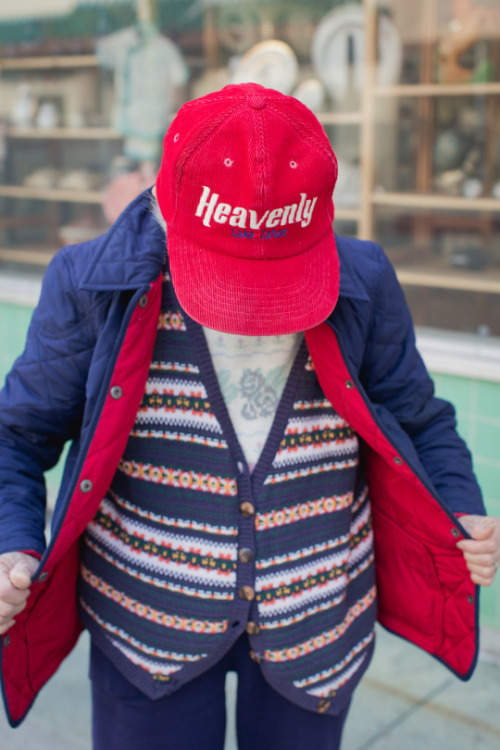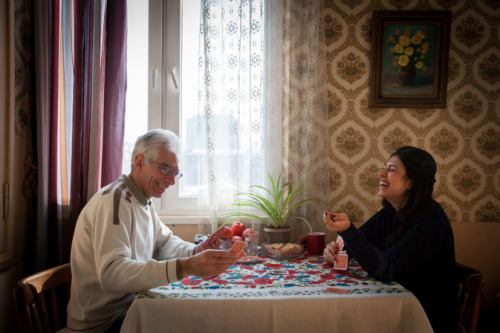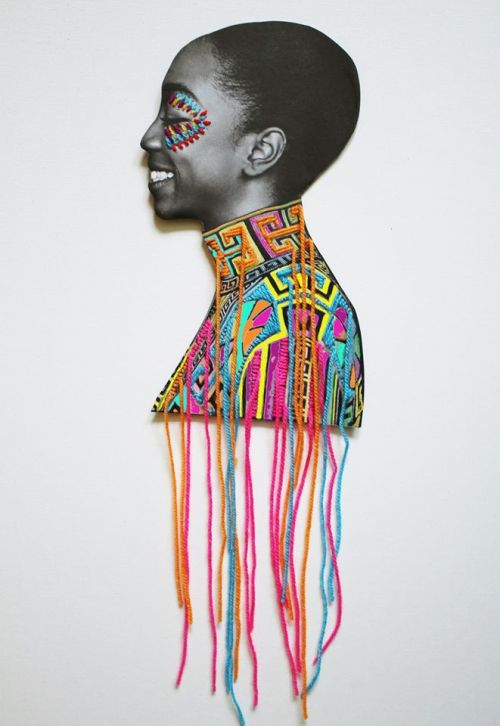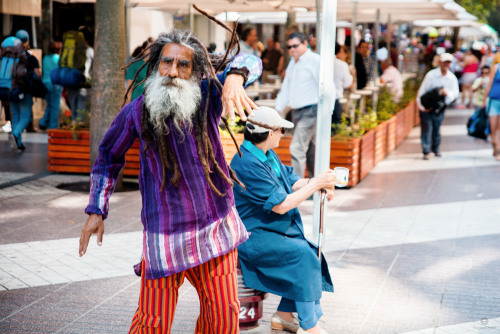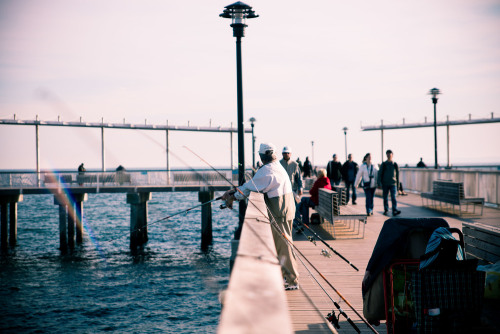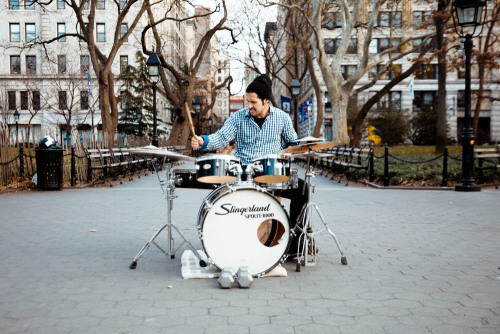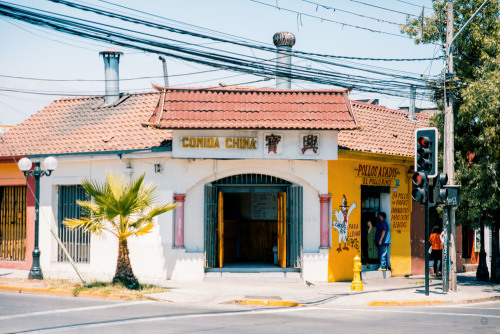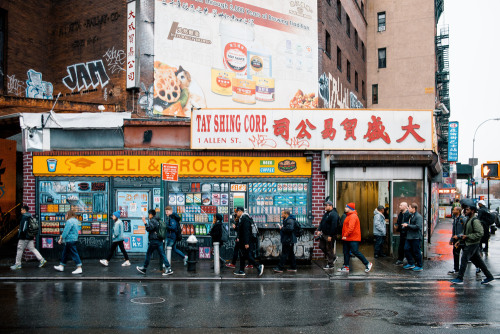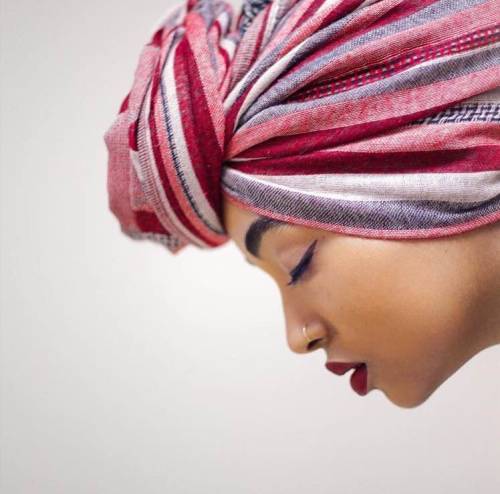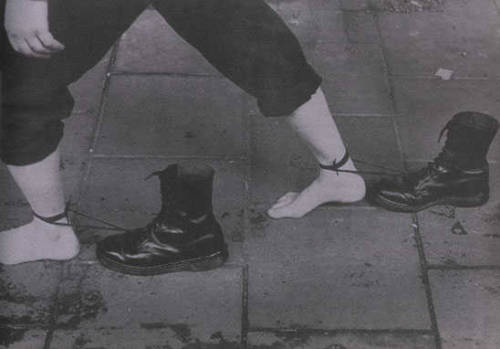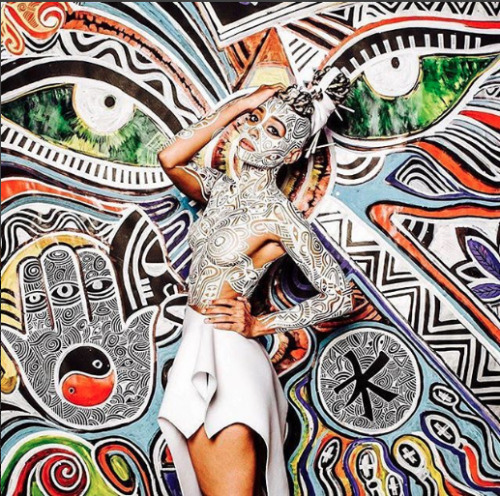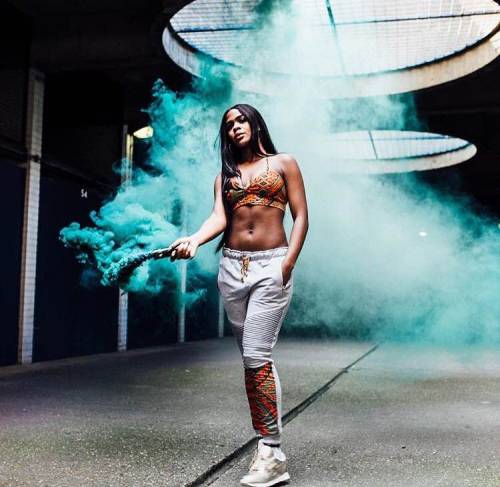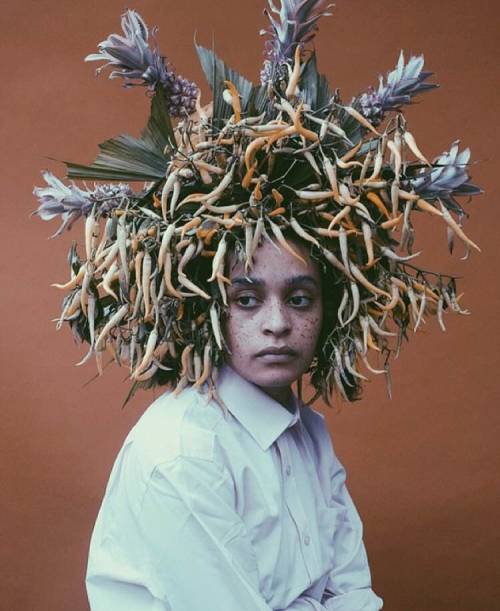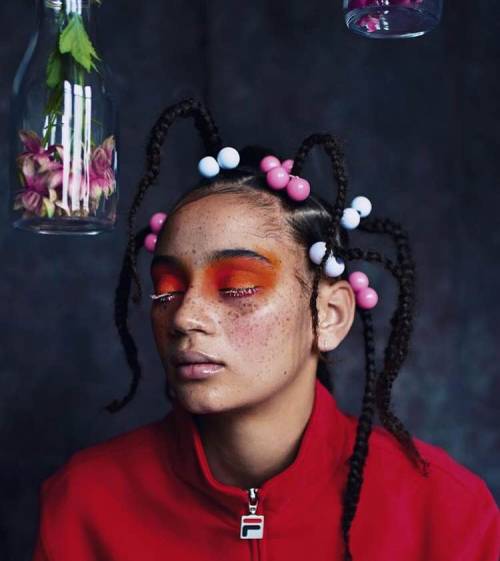#mixed culture
Shady Hafez on Being Algonquin and Syrian
A reflection on his First Nations and Arab identity
“Ottawa’s Muslim community is full of uncommon mixed race identities, but Shady Hafez, 22, might be an original. Born in Ottawa, the son of an Algonquin mother from the Kitigan Zibi reservation and a Muslim father from Syria, Shady was raised in two worlds, each misunderstanding of the other, and both misunderstood by mainstream Western culture.”
Post link
Chinatown Pretty is a street style blog featuring seniors living in San Francisco’s Chinatown. Started by two Asian-American friends inspired by their grandmothers’ fashion, the blog showcases senior fashion through third culture kids’ eyes, connecting two generations over unexpectedly shared aesthetics.
Post link
Russian-born Armenian American photographer Diàna Markosian fled Moscow in 1996 with her mother and brother, leaving her father behind. Fifteen years later she connected with him for the first time since they had left. In Mornings (With You), she chronicles a series of breakfasts with him, finding both intimacy and discomfort in an unfamiliar home.
Post link
“All the elements of who I am and my experiences are there in my art. When you spend time in another country, you appreciate things from your own culture in a different way. My background from Mexico is reflected in the yarn and colors, and the multicultural things I’ve experienced in London come through in the sense of style. And I want both of things things to be present in my art.”
Post link
“I would like to make art that helps women to be more confident. We need to support each other and spend less energy on things that make us weak or insecure. We have a really strong inner strength we need to nurture, and we shouldn’t feel like we need to just fill the roles society wants us to play. You have a to be a bit of a rebel.”
Post link
Giovanni Riccò spent the last six months photographing the Americas. In A Tale of Two Cities he draws parallels between New York City and Santiago, two mega-cities that on first glance seem very different, but share a foundation of immigration history and vibrant street life.
See the full photo essay here.
Post link
Giovanni Riccò spent the last six months photographing the Americas. In A Tale of Two Cities he draws parallels between New York City and Santiago, two mega-cities that on first glance seem very different, but share a foundation of immigration history and vibrant street life.
See the full photo essay here.
Post link
Giovanni Riccò spent the last six months photographing the Americas. In A Tale of Two Cities he draws parallels between New York City and Santiago, two mega-cities that on first glance seem very different, but share a foundation of immigration history and vibrant street life.
See the full photo essay here.
Post link
Self-portraits by Amaal Said, the Danish-born, London-based Somali photographer who’s known for her quiet, poetic portraits that expand representation of people of color in western media
Post link
“I dislike interviews. I’m often asked the same question: What in your work comes from your own culture? As if I have a recipe and I can actually isolate the Arab ingredient, the woman ingredient, the Palestinian ingredient. People often expect tidy definitions of otherness, as if identity is something fixed and easily definable.
“If you come from an embattled background there is often an expectation that your work should somehow articulate the struggle or represent the voice of the people. That’s a tall order really. I find myself often wanting to contradict those expectations.”
— Mona Hatoum, London-based, Lebanese-born, Palestinian artist in conversation with Janine Antoni for BOMB Magazine. Dense read, but so worth it. Highly recommended.
Post link
Can’t stop looking at Laolu Senbanjo’s body art after seeing it in Lemonade! The NYC-based Nigerian artist and activist on his art: “All of my work is heavily influenced by my Yoruba heritage and often related to the environment I find myself in. You will often see my travels reflected in my work.”
Photo by @theoluwaseye
Post link
Via Kiwi and Yam, multicultural clothing brand based in London. Nigerian British designer/founder Misi reinterprets Nigerian fashions and fabrics with a sporty edge
Post link
In <3 with the work of Nadine Ijewere, Jamaican Nigerian British artist who photographs mixed race and mixed culture women in London. “My work aims to celebrate multiculturalism and give a different take on beauty and its ideals,” she said In an interview with i-D. “I really want to give a platform and space for others cultures, to celebrate how diverse and different we are.”
Post link
In <3 with the work of Nadine Ijewere, Jamaican Nigerian British artist who photographs mixed race and mixed culture women in London. “My work aims to celebrate multiculturalism and give a different take on beauty and its ideals,” she said In an interview with i-D. “I really want to give a platform and space for others cultures, to celebrate how diverse and different we are.”
Post link
In <3 with the work of Nadine Ijewere, Jamaican Nigerian British artist who photographs mixed race and mixed culture women in London. “My work aims to celebrate multiculturalism and give a different take on beauty and its ideals,” she said In an interview with i-D. “I really want to give a platform and space for others cultures, to celebrate how diverse and different we are.”
Post link
“I’m not confused about who I am, but sometimes other people are.” — Lamaya Simpson
Lamaya collaborated with her mom Kim Simpson on ‘Projected Identity,’ a video piece that explores the interaction between multiracial and Scottish identities.
Watch the video and read the interview here.
Post link
EXOTTISH
by KIM & LAMAYA SIMPSON
When Lamaya Simpson was bullied out of her school for being mixed-race, her mom, artist Kim Simpson, took to her art. She created the multimedia series “Exottish,” which addresses how Scottish identity fragments and excludes Scottish people of color. The video below, “Projected Identity,” is a part of “Exottish” and a collaboration with Lamaya. Here Kim interviews Lamaya on her thoughts on being mixed-race in Scotland and collaborating with her mom.
Can you say a little about yourself?
I’m Lamaya. I’m 12 years old and I live in East Kilbride, Scotland with my mum, my cat, and my dog. I love dancing, drama, and singing.
Describe yourself in three words.
Tall, funny, smart.
Describe your identity. How would you define it?
I am a mixed-race Scottish girl. My parents are Scottish and Nigerian, so I’m an Afro-Scot. I’ve lived in Scotland all my life, so I’m totally a Scottish girl. I won first place at the regional Robert Burns recitation and singing competitions. You can’t really get much more Scottish than that!
What do you like about being you and having your identity?
I like that I know about two different cultures, and I like all the cool food and stuff. I like that I get to visit my Nigerian grandparents and aunts and uncles in Africa. I’m going to Nigeria for my aunt’s wedding soon, and I’m really excited.
How about the downside?
I get asked where I’m from a lot. People don’t think I’m Scottish because I don’t look like most Scottish people. And when strangers touch my hair. It’s really annoying. By the time people ask if they can touch my hair their hands are already on my head. People always think that Scottish people just have red hair, wear kilts, and eat haggis. Well I eat haggis too!
Do you think when that happens people are being racist?
Not really. I think mostly they’re just asking questions because they’re interested. It’s just people who still have a lot of learning to do. Maybe they just haven’t been around that many people of different races. It’s still annoying sometimes, and it can get really weird, like when people point at me or follow me around the supermarket telling me how gorgeous I am. It sounds nice, but it’s really creepy!
Has your identity changed as you’ve gotten older?
No, I’ve always been the same person and I’ve always known who I am. I remember when you told me that I used to point at Beyoncé on TV when I was a baby and say “Lamaya!”, so I knew I didn’t look like you early on. I do feel a little different than people around me, but not in a bad way. I think that just comes with being mixed-race. I’m not confused about who I am, but sometimes other people are.
Who has helped you understand your identity?
Well, you, because we learn together. Also Valerie, the mixed-race woman I did a fashion show with. We talked about some of the stuff that she went through growing up in Scotland, and she had a lot of things said to her that have been said to me. She was really nice. I kind of want to be like her when I grow up. And I like Zendaya. She’s really funny and pretty. Some people say she’s like an older version of me, and I don’t mind them saying that at all!
What do you think about my art projects that have been inspired by you?
I think they’re very good. It’s a good idea to get people talking about diversity in Scotland so that it doesn’t seem strange to be black or brown and also Scottish. It doesn’t mean that you’re from somewhere else.
What is it like for you to be involved?
I’m really proud of it and I like that I’ve helped make something that’s so cool. It’s good to know that there’s been a really good reaction and that people are interested in talking about it and seeing the pictures. It’s helped me learn where I fit in in the world, and you’ve been learning lots along with me.
Did you like working on “Projected Identity”?
It was fun to shoot! I really like dancing, so I got to do what I like to do and you got to do what you like to do. I think that’s why it looks good. We’re both enjoying ourselves. I like all the old Scottish pictures projected on me. And I like how at the end you get to see what our family is like. But it was cold because I was only wearing a leotard and it was late at night in a big cold studio!
Do you want to be a photographer when you grow up?
Nope. I did want to be a marine biologist, but I also like advertising and want to be an actress.
You need photographers for all those careers. Maybe I’ll come work for you!
[Laughs] ✰
See more at confluxmagazine.com
Music from Ebb to Flood by Paul Mounsey. Courtesy of ISA Music.
Obsessed with Ayqa Khan’s ‘Liberation’ for Kajal Magazine, a photo essay on the artful transition from parent-approved to party-ready. Classic.
Post link
Araki Koman is a Guinean Malian French artist who’s lived in five countries on three continents. It’s no surprise then that her love of global cultures has influenced everything from her artwork to her life choices. While living abroad, she founded OUM x YUKI, an interview-based website about finding yourself through travel. We talk to her about the aesthetics of emigration, mother-daughter connections, and being the odd one out. Photo by Marina Pen.
Tell us about your website OUM x YUKI. What is it all about?
OUM x YUKI is my website about multiculturalism, hybrid identity, and finding yourself through travel. I’ve always been inspired by cultures around the world, even as a child. I remember being four or five, going to Chinatown, and being obsessed with the colors, the smells, the sounds. When I got older I loved finding photos of fashion and aesthetics from all around the world. I was always learning and exploring.
Now I’ve lived in the UK, Denmark, Iceland, Canada, and China, and I’ve realized how travel can open your mind. All the people I’ve talked to through the website, whether they’re immigrants now or have traveled to different countries, have all had deep experiences that are difficult to describe. It becomes part of you. OUM x YUKI is a place where people can share those experiences and others can connect with them.
How did it all start?
I started it when I was in London in 2011, but it has evolved over time. I was working as a graphic designer, but I can never do just one thing, so I started selling clothes that I had from all my travels at a market. The vibe was inspired by my mom’s style when she arrived in France: a little funky and a little traditional at the same time. I decorated my stall with pictures of visual anthropology from around the world. I called the store OUM x YUKI.
The website took its current form when I was in Iceland, right after London. Living there, I connected with my parents’ immigrant experiences more than I ever had. I realized just how courageous they were. I wanted to pay tribute by focusing on the glamorous side of immigration. My website, like my clothing stall, reinterpreted earlier generations’ aesthetics with a modern eye.

Araki’s mom in France.
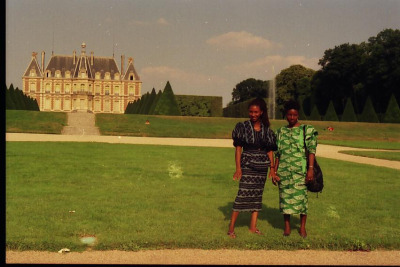
Araki’s mom and friend in France.

Araki’s mom in France.
It’s interesting that you connect family history and fashion. The usual trend is to focus on what’s up-and-coming. People rarely connect present with past.
Yes, designers always look to global cultures for inspiration, yet they never pay attention to the actual people. There is such a negative image of migration. But people who have moved places, they can be so open-minded and inspiring. There can be so much to learn and share from earlier generations.
The name OUM x YUKI reflects that mother-daughter connection. The “OUM” represents the mother, honoring women from older generations, especially moms who immigrate. It comes from Oum Kalthoum and Oumou Sangaré. Oum Kalthmou was a mid-century Egyptian singer who united the Middle East around her music. I liked her aesthetic. She was very traditional but also avant-garde. Oumou Sangaré is a Malian singer. She does traditionally Malian music, but she’s known around the world.
YUKI represents the daughter, the child of immigrants, the modern perspective. It comes from Yukimi Nagano from the band Little Dragon. She’s Japanese and American Swedish. Combined, OUM x YUKI represents the connection between old and new, Western and non-Western.
You’ve lived in a lot of different countries yourself. How did the experiences compare?
Well the big difference for me is between the societies that are homogeneous and the ones that are multicultural. In multicultural places with a history of immigration, like Bristol, Montreal, and London, it’s easy to adapt. Living in London was especially liberating for me. There are no boundaries; even in the mixing aesthetics: people dress up just to go buy bread and they mix things in such interesting ways. It’s very inspiring.
Societies that are more homogenous are different. In Denmark, a man in the supermarket tried to introduce me to his wife just because she was from Kenya. In China especially I had a bad experience. I was just a Black person to them. When they saw me they would have one reaction, and then they realized I was French and acted differently. It was the first time I realized I was Black. For a while after that I was like, okay that’s it. I don’t like Asia anymore.
I’ve done a lot of introspection in those situations. Because from when I was a child I’ve always been like, “I’m not black, I’m Araki!” I was never really into my parents’ culture growing up, and I don’t think about my color constantly. It’s not a big part of my perspective.

Drawing by Araki.

Drawing by Araki.

Drawing by Araki.
It’s interesting that you’re interested in other cultures, but don’t feel that connected to your own. Why do you think that is?
I don’t know, my curiosity about other cultures just comes naturally. Ever since I was little, I loved learning about other cultures and meeting people from other places. Growing up, people always thought it was weird. My family isn’t super traditional or religious, and people in school would always ask me why I wasn’t practicing or why I ate pork. It was so irritating to me. I was just doing what I wanted to do.
But I never tried to fit in. I just wanted to connect with people who were more open-minded. Thanks to the Internet, I didn’t feel so lonely. It was a way to get the courage to keep being myself. You find people who are like you, who have been there before and have moved forward. Even with OUM x YUKI, I continue to meet new people who are open-minded and inspiring.
How is it being back in France after living so many places?
It’s different. In France there’s social pressure to follow a certain path, and even if you have achievements in another area, it’s not enough. Experiences abroad are not taken seriously. It’s very frustrating, because I feel I’ve lived so many deep experiences and people aren’t even interested. They’ll be like, “Oh sorry, you don’t fit in the box.”
That’s why I’m still considering leaving. I feel freer in places where there are less boundaries. I also love Japan. I’ve loved it since I was 13, and when I visited a few years ago I had this déjà vu kind of feeling. I love the philosophy, the humbleness, wabi sabi aesthetics, the textiles, the food. I would love to go back for longer.
How are your values reflected in your art?
A love for cultures is in my subconscious, and it naturally comes to everything I do. When I draw and collage, I take inspiration form visual anthropology, like styles and spiritual symbols that occur around the world. I mix everything into one drawing. So maybe the girl I’m drawing will have a tattoo from North Africa and a haircut from Peru. I always just want to open people’s minds. We all have more in common than you think. ✰
See more at confluxmagazine.com
Post link
ATTENTION, WORLD! We now have a pretty new website where you can *ORDER OUR FIRST ISSUE ONLINE*<3
Here’s what you’ll find in VOL 1 ISSUE 1: THE MIXED CULTURE ISSUE:
THE LIFE ALCHMEIST Elizabeth Brand photographs wellness blogger/world traveler Diya SenGupta
(RE)CALLING HOME Daniel Hopp calls his mom to discuss growing up the Chinatown of Manila
DATING WHILE OLIVE/TAN/BROWN (PICK ONE OR ALL), MUSLIM (BELIEVE IT OR NOT), AND BROKE OFF MY ASS (THIS ONE’S UNNEGOTIABLE) Editor-in-Chief Ozra Yazdani explains it all
THE LAST SEMESTER Hugo Estrada talks to his sister and her partner about starting a new family
IN HER SANCTUARY Editor-in-Chief Anita SenGupta asks Indonesian musician Andine Sutarjadi about her influences
STRINGS ATTACHED Photographer Justin Amoafo explores human interaction
WHAT’S IN A NAME Editor-in-Chief Anita SenGupta wonders if names really matter
LIFE HACKS OF A MODERN-DAY POWER WOMAN Editor-in-Chief Ozra Yazdanzi gets life advice from wonder woman Mona Sinha
MY OTHER SELF Photographer Morgan Gelber visits her motherland
Post link



